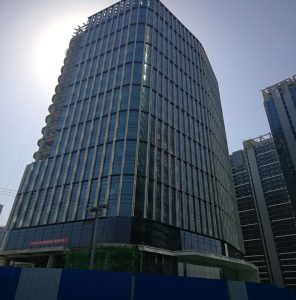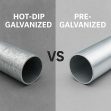Thermal Performance of Curtain Wall System
Curtain wall is presently being adopted widely in high-rise buildings because of its several merits in many aspects. Curtain walls, however, also have problems, such as thermal efficiency and moisture condensation, especially in countries where there are four seasons like Korea, because of wide glazing windows and metal frames that have high thermal conductivity. Furthermore, insulation efficiency is more important in high-rise buildings than in low-rise buildings when outdoor conditions worsen.

In practical applications, thermal performance is one of the essential criteria in the modern curtain wall design, considering energy saving and sustainability is one of the hottest topics that we cannot ignore. Glass panels generally have better thermal performance, and the next challenge is to provide an excellent thermal break aluminium system to offer an excellent insulated facade. As a rule, the U-Value originated from the energy transfer through building materials from a high density of molecules to a lower density. The second rule of thermodynamics applies to this theory. It is an ongoing debate on how it changes the performance when cooling loads are calculated to keep the heat outside. Tropical countries usually have a temperate difference of ~10 degrees Celsius between interior and exterior while here in the UAE, we are fighting with around 25 temperature differences. The same is applicable in cold countries where the temperature delta reaches up to 30 degrees C. Tropical climate does not require a strict U-Value and high shading coefficient.
In tropical countries, windows and terraces are often shed with big and wide cantilevered canopies or roof extensions. At the same time, cold countries open their south facades to gain heat from the winter sun. In that regard, a well-designed curtain wall facade would have better thermal performance in buildings. In most cases, the thermal performance of glass curtain wall is defined by its U-value, and this measure indicates the energy transmitted through the curtain wall. In other words, the lower the U-value the more efficient is the thermal performance of the glass curtain wall. U-values requirements are clearly stated on the energy consumption regulations. And the available facade technologies allow for improved U-values to achieve higher sustainability goals such as the zero-emissions buildings.
In addition, thermal comfort through fenestration is the key to a sustainable building. Meanwhile, the fenestrations also need taking into consideration the sun, wind direction and shadows of the neighbouring building which are cast on it. It needs to balance the ambient light infiltration for the building to operate efficiently and also minimise the heat gains in an India like climate. Besides, a second skin, which is called a rain screen, can help the curtain wall facade on the west and south to minimise the heat gain. The factors considered to reduce solar heat gain include climatic response, building orientation, window size, as well as glazing.
Tel: +86 18202256900 Email: steel@tjdpbd.com









